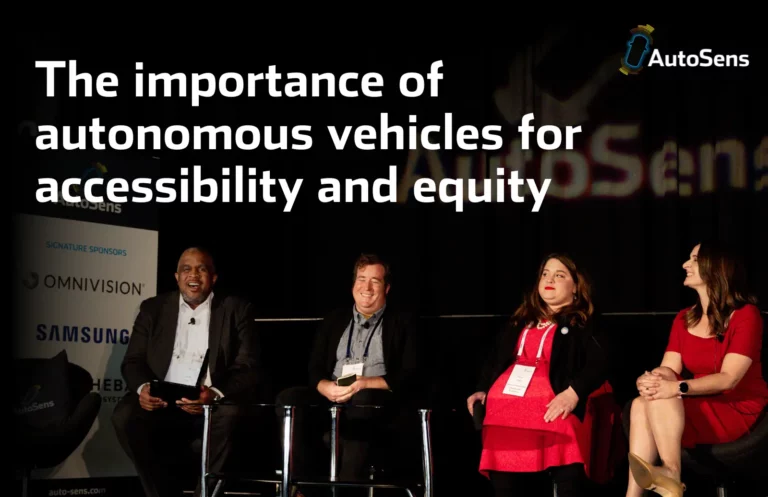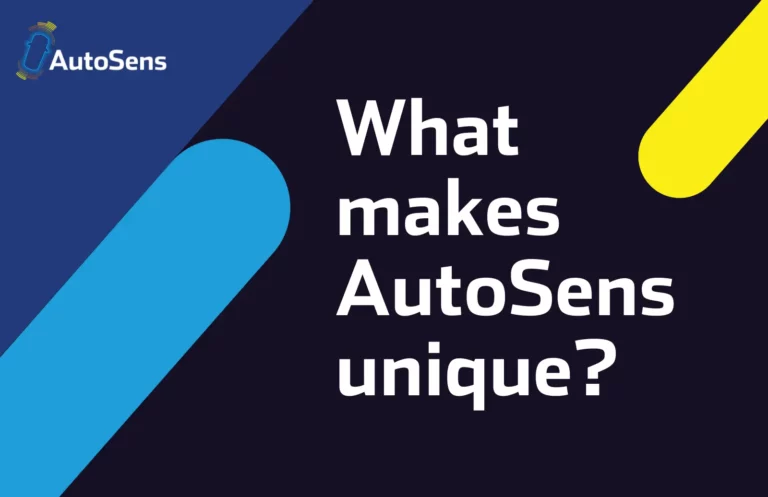Autonomous driving technology has made significant advancements in recent years, offering various levels of autonomy that range from Level 0 (no automation) to Level 5 (full automation). In this blog post, Juergen Hoellisch will focus on the capabilities and use cases of Level 2 and Level 2+ cars, as well as the potential applications of Level 3 and Level 4 autonomy ahead of the sessions he will be chairing at AutoSens this September.
In the meantime, we also talk about Level 2++ and Level 2-99%
Potentially next one will be Level 2++++++ and 99.9%
I think it just shows how big the step is not just technology wise, but also from legislation and
acceptance.
This year, I have helped AutoSens to develop two whole session tracks focussing on “Level 2 cars with Level 3 and Level 4 use cases”, and “Park assist and low-speed manoeuvring” – both of which, I will also be chairing on Wednesday 20th September from 2:15pm (if you have ever been in my sessions, you know you’re in for a good laugh and lots of insightful conversations)!
Before we begin, I want to note that I won’t intend to touch on the topic of “Level 4 Autonomous Cars” in this blog, because as we learned, the Level 4 legislation is there, but the technology is behind. We have not had that situation before, but we have so-called Level 4 use cases / applications.
… Buckle up!
Let me try to explain the track using “Parking” as an example:
As the urban population continues to grow, the demand for efficient parking and smooth low-speed maneuvering becomes increasingly critical. In congested cities with narrow streets and heavy traffic conditions, autonomous parking systems have emerged as a promising solution. These advanced technologies are designed to alleviate the stress of finding parking spaces and executing complex manoeuvres.
However, like any groundbreaking innovation, there are challenges to overcome. In these track sessions, we will explore the current state of autonomous parking and low-speed maneuvering, along with the challenges faced and new innovations that are transforming the landscape.
APA System (Automatic Parking System)
This is a system where you either still do braking – facing similar issues, or where you have advanced systems where you also have an emergency brake system applied. In this application, the driver is still fully responsible – also for “driving on contact”. APA System is already a Level 3 use case, as the driver can take their hands off the wheel.
Valet Parking – one of the most requested use cases
So, the driver is not in the car and the car drives alone. Another option is you wait in front of the house, and the car manoeuvres out of the parking spot or garage and drives to your position.
This is a full Level 4 function – but this does not mean it needs to be a full Level 4 car. A Level 4 car means there wouldn’t be a driver controlling the car in all areas, all scenarios and all situations.
In the case where the driver is not in control anymore, you need to make sure the system is 100% working. 99.9% is not good enough here. 99.9% can kill people.
Challenges in Autonomous Parking
1. Perception and Environment Understanding: One of the primary challenges autonomous vehicles faces, is accurately perceiving and understanding their surroundings in real-time. Narrow streets and heavy traffic conditions pose difficulties for sensors and cameras to detect obstacles, pedestrians, and other vehicles accurately. Overcoming these challenges requires advanced perception algorithms and sensor fusion techniques to ensure precise and reliable data interpretation.
2.Precise Mapping and Localization: Accurate mapping and localization are crucial for autonomous parking systems. Creating detailed maps of narrow streets and updating them in real-time is a complex task. Additionally, GPS signals can be unreliable in urban canyons, making it challenging for vehicles to determine their precise location. Innovations such as high-definition mapping and advanced sensor technologies like LiDAR help improve localization accuracy in such demanding environments.
3.Safe and Efficient Navigation: Navigating through narrow streets and heavy traffic requires a high level of precision and safety. Autonomous vehicles must be able to make real-time decisions, navigate tight spaces, and interact with pedestrians and other vehicles. Ensuring the safety of passengers, pedestrians, and surrounding vehicles is a critical challenge that must be addressed through sophisticated algorithms and robust safety measures.
4.Human Interaction: In scenarios where autonomous vehicles share the road with human drivers, communication and interaction become essential. Human drivers often rely on non-verbal cues, such as eye contact and hand gestures, to navigate through congested areas. Developing effective communication methods between autonomous vehicles and human road users is a significant challenge that requires extensive research and innovative solutions.
Innovations in Autonomous Parking and Low-Speed Manoeuvring
1.Multi-Sensor Fusion: Autonomous vehicles are equipped with an array of sensors, including cameras, radar, LiDAR, and ultrasonic sensors. By combining data from multiple sensors, vehicles can create a comprehensive understanding of their environment, increasing accuracy and reliability. Sensor fusion algorithms are continuously evolving, enabling vehicles to perceive and react to their surroundings more effectively.
2.Deep Learning and Artificial Intelligence: Deep learning algorithms and artificial intelligence play a vital role in improving autonomous parking systems. Through continuous learning and adaptation, vehicles can enhance their perception, decision-making, and manoeuvring capabilities. AI-powered systems are capable of recognizing complex patterns, predicting road user behavior, and adapting to dynamic traffic conditions, leading to safer and more efficient parking experiences.
3.V2X Communication: Vehicle-to-Everything (V2X) communication allows autonomous vehicles to exchange information with infrastructure, other vehicles, and pedestrians. This technology facilitates safer parking and manoeuvring by enabling vehicles to receive real-time traffic updates, road condition alerts, and pedestrian movement information. V2X communication can reduce congestion, enhance safety, and optimize parking operations in urban environments.
4.Robotic Valet Parking: Robotic valet parking is an emerging innovation that aims to revolutionize the parking experience. In this system, passengers can exit the vehicle at a designated drop-off area, and the vehicle autonomously parks in the appropriate area.
Level 2 Autonomous Cars
Level 2 autonomy represents partial automation, where the vehicle can assist with specific driving tasks but still requires constant driver supervision. Some of the key features of Level 2 autonomous cars include:
1.Adaptive Cruise Control (ACC): This system automatically adjusts the vehicle’s speed to maintain a safe distance from the vehicle ahead. It can accelerate, decelerate, and come to a complete stop without driver intervention.
2.Lane-Keeping Assist (LKA): LKA helps the driver stay within the lane by providing gentle steering input to prevent unintentional lane departures.
3.Automated Parking Assistance: Level 2 cars often come equipped with automated parking assistance, which helps with parallel or perpendicular parking by providing steering control while the driver controls the throttle and brakes.
4.Traffic Jam Assist: This feature enables the vehicle to maintain a set speed and follow the car ahead in slow-moving traffic. It can also provide steering assistance to keep the vehicle centred within the lane.
Level 2+ Autonomous Cars
Level 2+ represents an advanced form of partial automation, often referred to as “hands-on, eyes-off.” While the driver is still responsible for monitoring the driving environment, Level 2+ cars can handle more complex driving tasks compared to Level 2. Some additional features include:
1.Advanced Driver Assistance Systems (ADAS): Level 2+ vehicles incorporate advanced sensors, cameras, and computing power to provide enhanced safety features. These may include pedestrian detection, blind-spot monitoring, and collision avoidance systems.
2.Advanced Lane-Keeping Assist (ALKA): ALKA goes beyond basic lane-keeping and can handle more challenging scenarios, such as navigating curves or making lane changes with driver confirmation.
Level 3 Autonomous Cars
Level 3 autonomy, also known as conditional automation, represents a significant leap in autonomous capabilities. In Level 3 vehicles, the driver can relinquish control of the vehicle under certain conditions but must be prepared to take over when prompted by the system. Use cases for Level 3 autonomy may include:
1.Highway Driving: Level 3 autonomous cars can handle the majority of driving tasks on highways, including maintaining speed, changing lanes, and exiting the highway. However, the driver must be ready to intervene if the system encounters a situation it cannot handle.
2.Traffic Congestion: Level 3 autonomy can also be useful in heavy traffic conditions, allowing the driver to engage the autonomous mode and let the vehicle navigate through stop-and-go traffic.
Current Approval for so called Level 3 cars, are for 1 Function (Application) which is the Highway Pilot up to 130km/h – that’s it. So, it’s not a Level 3 car – it is a car that has one Level 3 use case qualified, approved and allowed to be used.
Autonomous parking and low-speed manoeuvring in narrow streets and heavy traffic conditions present significant challenges that require innovative solutions. However, with advancements in perception, mapping, navigation, and communication technologies, autonomous vehicles are becoming better equipped to handle these complexities. Multi-sensor fusion, deep learning, V2X communication, and robotic valet parking are just a few of the innovations that are transforming the autonomous parking landscape.







